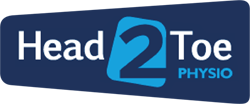What types of Low Back Pain (LBP) are there?
The three main types of LBP are Non-Specific Low Back Pain (NSLBP), Nerve Root Pain (Sciatica) and Cauda Equina Syndrome. 95% of new or acute low back pain episodes are NSLBP.
One of the most basic skills a first contact practitioner like a GP or Physiotherapist must have, is the ability to sort a back pain patient into one of these 3 main categories. Thankfully patients with cauda equine symptoms and true nerve root symptoms are few. It follows that most patients that come into see us at Head2Toe Physio fall into the NSLBP category.
NSLBP is called non-specific because no one knows the exact cause or source of the pain for definite. Put another way, there is no specific disease that can be identified.
These are the patients who could see 10 different therapists and get ten different diagnoses. I would like to hope that it wasn’t the case but sadly it does happen. Patients with NSLBP often come in to the clinic and tell me they have been told that a disc has ‘slipped out’ or there ‘pelvis is twisted’ or they have a ‘jammed sacrum’ or a muscle that’s ‘not firing’ or maybe even ‘a leg that’s longer than the other’.
How to manage or treat simple LBP or NSLBP?
Its not always as straight forward as it seems and can confuse patients. What is the best thing for them to do or who should they see. Below is some of the current guidance from both the patient.co.uk website and the NHS website for managing low back:
- Give information, reassurance and advice.
- DO NOT prescribe bed rest.
- Advise the patient to stay as active as possible.
- Prescribe regular pain relief (paracetamol, non-steroidal anti-inflammatory drugs) and consider a short course of muscle relaxants.
- Referral: •Consider physical treatments, manipulation or multidisciplinary approaches if not resuming normal activities or if off work.
- It is now recommended that such referrals be considered earlier than previously recommended – that is, ‘after a week or two’ , in the past this has been recommended at 6 weeks and early physiotherapy and corrective exercises can increase recovery and aid in a quicker return to work.
•McKenzie exercises (a programme of exercises that patients can be taught to do at home) are popular. One study found that the McKenzie method was slightly more effective in relieving disability compared to attendance at a back school but there was no difference in terms of pain relief.
In summary, most low back pain falls into the category of being NSLBP (Non Specific Low Back Pain). When you see one of our Physiotherapists at Head2Toe Physio, they will assess you to see which type of low back pain you have and then advise you and treat you appropriately using the best current guidelines we have. We offer a range of treatments including spinal manipulation, mobilisation, massage, acupuncture and exercise prescription. In addition a number of our Physiotherapists have experience using McKenzie based therapy and Pilates.
If you or anyone you know is suffering from low back pain and would like to have a physiotherapy assessment for suitability of physiotherapy treatment, contact us here.





